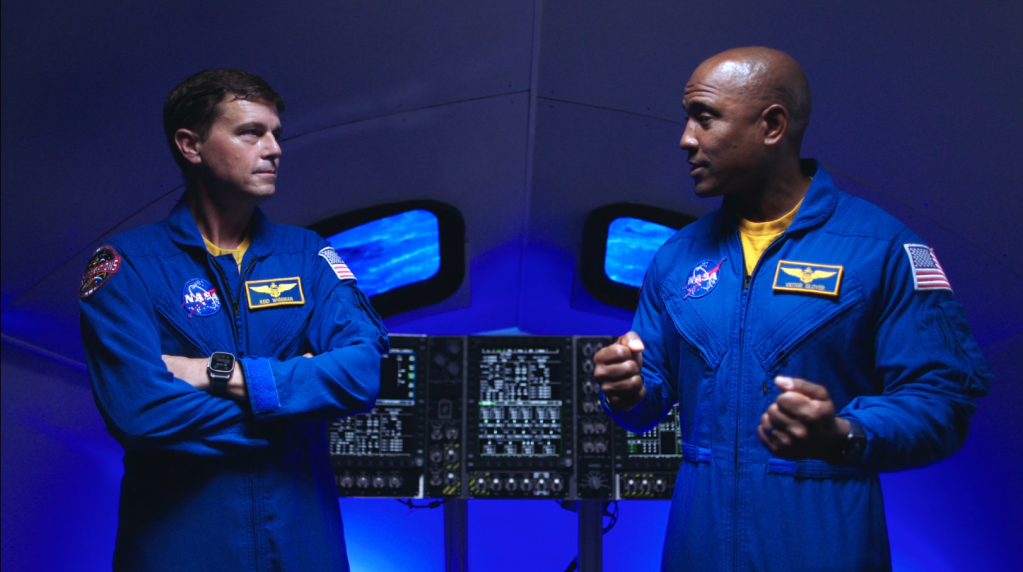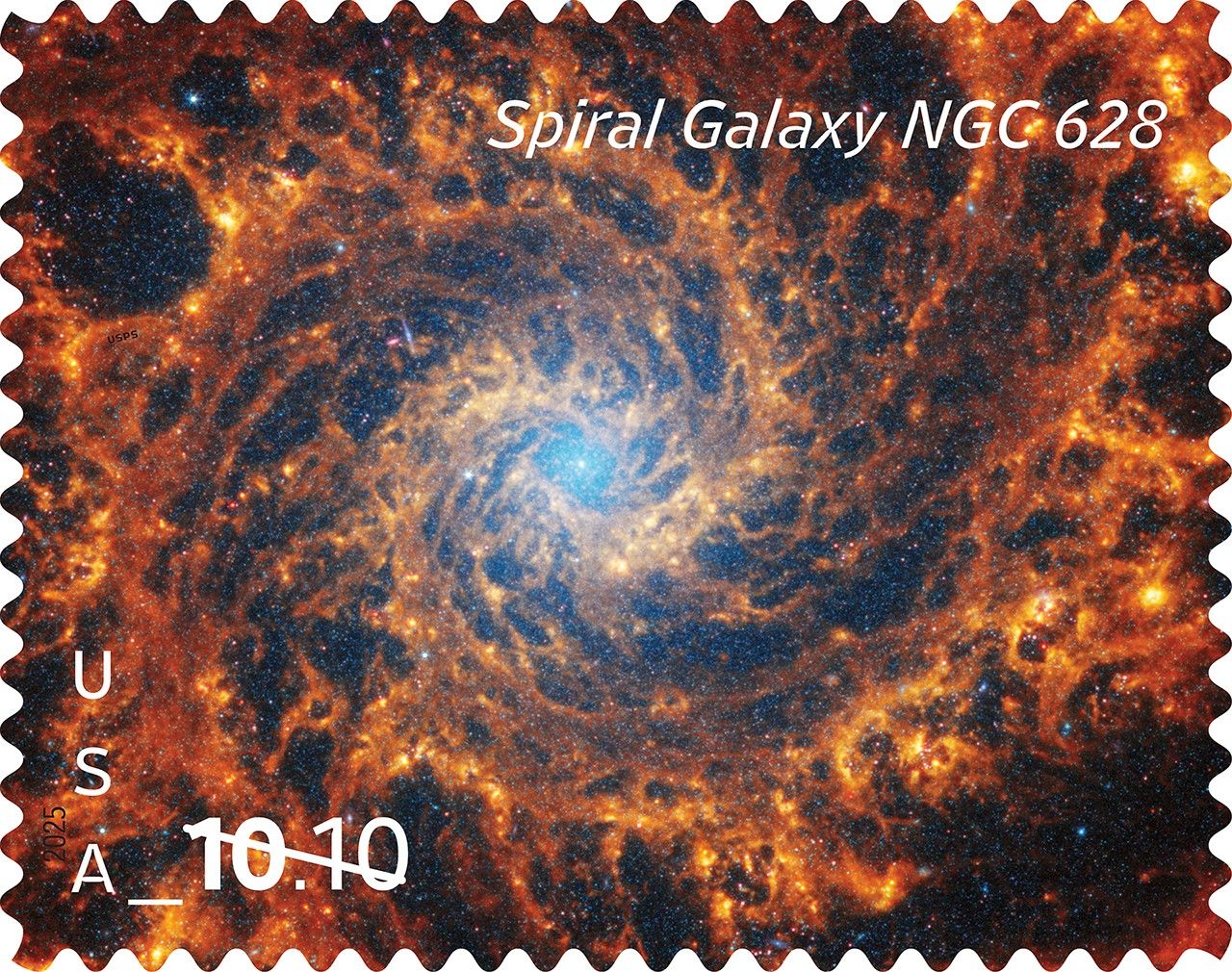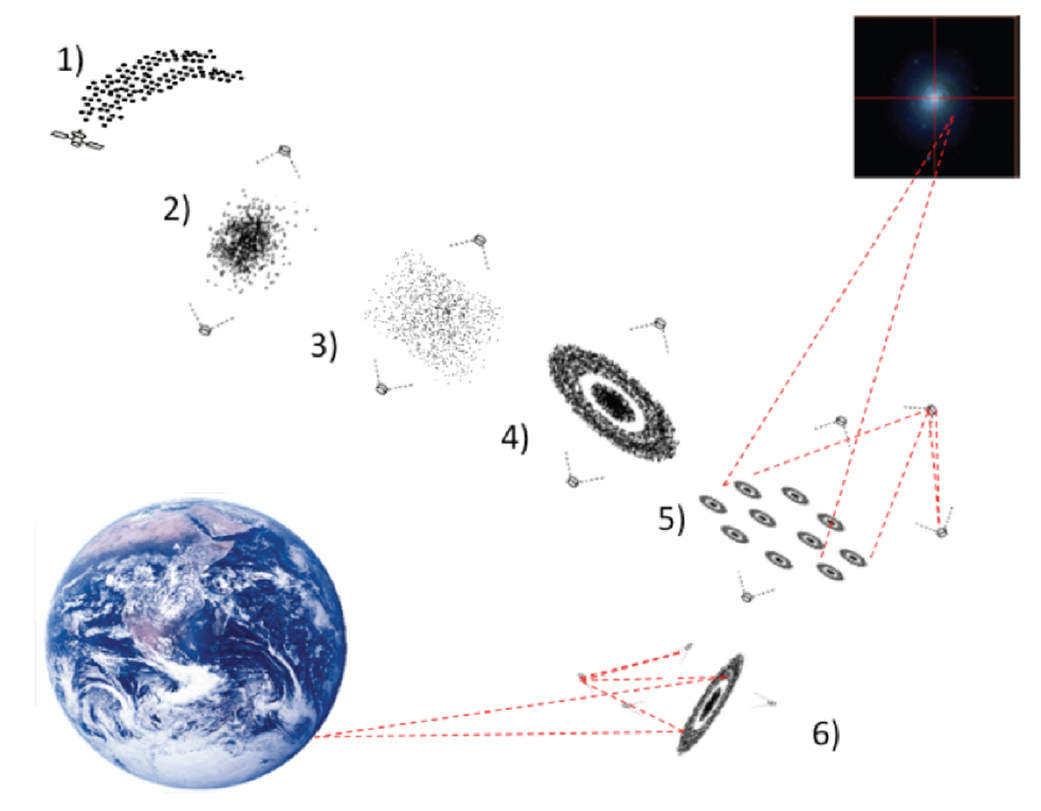Marco Quadrelli
NASA Jet Propulsion Laboratory
NIAC 2014 Phase II Quadrelli Orbiting Rainbows Final Report
Description
Inspired by the light scattering and focusing properties of distributed optical assemblies in Nature, such as rainbows and aerosols, and by recent laboratory successes in optical trapping and manipulation, we propose a unique combination of space optics and autonomous robotic system technology, to enable a new vision of space system architecture with applications to ultra-lightweight space optics and, ultimately, in-situ space system fabrication. Typically, the cost of an optical system is driven by the size and mass of the primary aperture. The ideal system is a cloud of spatially disordered dust-like objects that can be optically manipulated: it is highly reconfigurable, fault-tolerant, and allows very large aperture sizes at low cost. This new concept is based on recent understandings in the physics of optical manipulation of small particles in the laboratory and the engineering of distributed ensembles of spacecraft swarms to shape an orbiting cloud of micron-sized objects. In the same way that optical tweezers have revolutionized micro- and nanomanipulation of objects, our breakthrough concept will enable new large scale NASA mission applications and develop new technology in the areas of Astrophysical Imaging Systems and Remote Sensing because the cloud can operate as an adaptive optical imaging sensor. While achieving the feasibility of constructing one single aperture out of the cloud is the main topic of this work, it is clear that multiple orbiting aerosol lenses could also combine their power to synthesize a much larger aperture in space to enable challenging goals such as exo-planet detection. Furthermore, this effort could establish feasibility of key issues related to material properties, remote manipulation, and autonomy characteristics of cloud in orbit. There are several types of endeavors (science missions) that could be enabled by this type of approach, i.e. it can enable new astrophysical imaging systems, exo-planet search, large apertures allow for unprecedented high resolution to discern continents and important features of other planets, hyperspectral imaging, adaptive systems, spectroscopy imaging through limb, and stable optical systems from Lagrange-points. Furthermore, future microminiaturization might hold promise of a further extension of our dust aperture concept to other more exciting smart dust concepts with other associated capabilities. Our objective in Phase II is to experimentally and numerically investigate how to optically manipulate and maintain the shape of an orbiting cloud of dust-like matter so that it can function as an adaptable ultra-lightweight surface. Our solution is based on the aperture being an engineered granular medium, instead of a conventional monolithic aperture. This allows building of apertures at a reduced cost, enables extremely fault-tolerant apertures that cannot otherwise be made, and directly enables classes of missions for exoplanet detection based on Fourier spectroscopy with tight angular resolution and innovative radar systems for remote sensing. In this task, we will examine the advanced feasibility of a crosscutting concept that contributes new technological approaches for space imaging systems, autonomous systems, and space applications of optical manipulation. The proposed investigation will mature the concept that we started in Phase I, identifying technology gaps and candidate system architectures for the spaceborne cloud as an aperture.






























